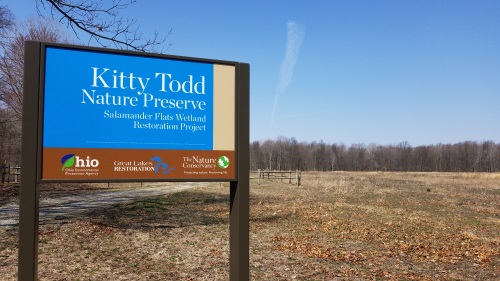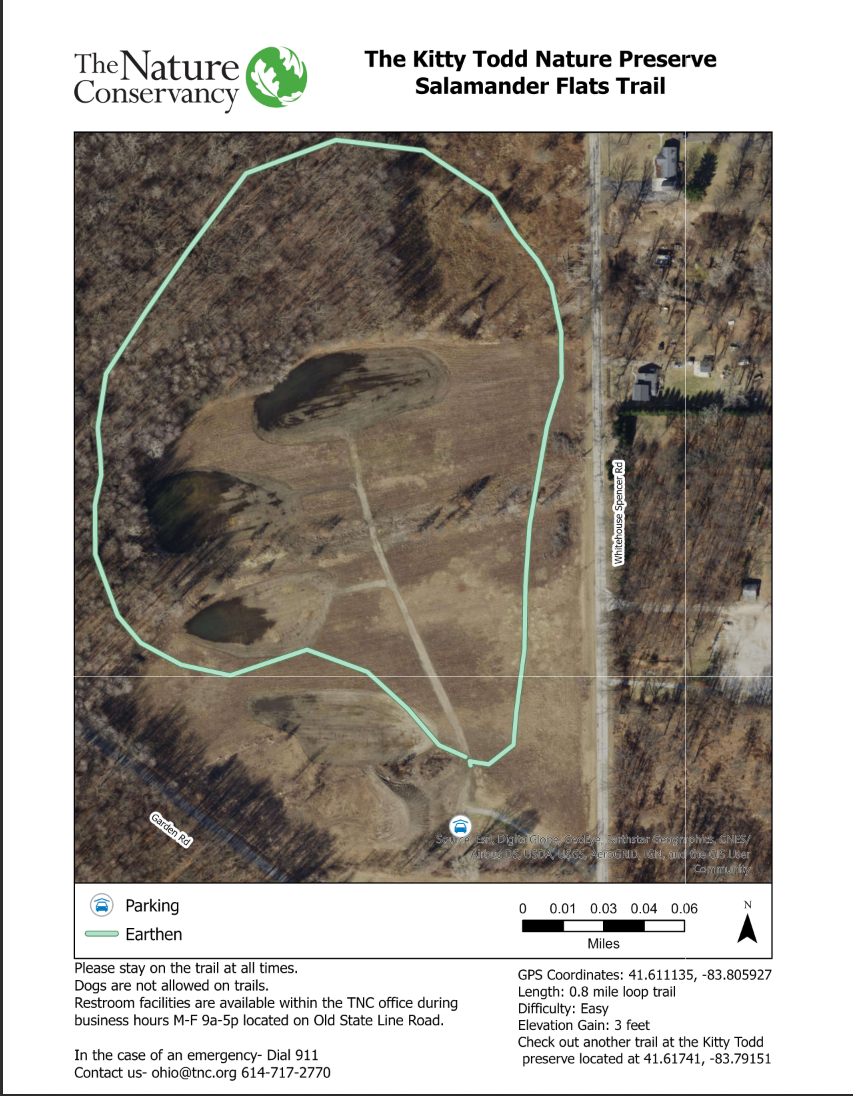Salamander Flats

Salamander Flats
The Nature Conservancy Swanton, Ohio 43558
Official WebsiteAlso, see all the hotspots at:
Oak Openings Important Bird Area
Tips for Birding
Also, see:
Kitty Todd Nature Preserve
About this Location
Marsh birds have returned to former farm fields in an area that The Nature Conservancy now calls Salamander Flats, following an innovative land renewal project funded by the Great Lakes Restoration Initiative.
The sight and sound of bulldozers on land that is now part of the Conservancy’s Kitty Todd Preserve may have come as a surprise to onlookers, but scraping a foot or two of soil from the fields was an important part of the wetland restoration, which was completed in partnership with the Ohio EPA with technical assistance from the University of Toledo.
“Before settlement, the soil of the Oak Openings varied greatly, with drier, sandier ridges and richer soil in wetter low spots,” explained Julia Gehring, conservation coordinator at the Conservancy’s Oak Openings project office. “The variety of soil and water levels provided habitat for lots of different plants and animals.”
But that variety was lost when the land was drained for farming and while it was routinely plowed and planted, Gehring said. After the Conservancy bought the land in 2010, they brought together soil scientists, geographers, naturalists, and students to consider the best techniques for restoring the farm fields to a habitat type that ecologists call lake plain wet prairie.
“Lake plain wet prairie are some of the rarest, most diverse, and highest-quality wetland types found in the state,” Gehring said.
A foot or two of soil was scraped from five separate areas, creating a larger dune, soil diversity, and forming about four acres of pothole wetland that will capture and retain open water into early summer. This will provide important breeding and nursery habitat for many species of amphibians including the state endangered blue-spotted salamander, as well as flood storage capacity.
The project earned funding through the EPA’s Great Lakes Restoration Initiative Maumee River Sediment and Nutrient Reduction Grant Program because it not only provides habitat for rare species but also captures and stores sediment and fertilizers from a small tributary to the Maumee that passes through the property. Fertilizer from farm fields is the primary contributor to seasonal harmful algal blooms in Lake Erie, such as the one that shut down Toledo’s water supply in 2014.
Within months of the restoration, species like western chorus frogs and marsh birds began visiting the property to use the space for breeding and foraging, Gehring said. Monitoring of the project will continue with the help of the University of Toledo.
Salamander Flats now takes its place within the Conservancy’s 1,000-acre Kitty Todd Preserve, a centerpiece of the 130-square-mile Oak Openings Region. The preserve is a model of land management practices for the region and is open to the public. Salamander Flats is accessible by trails.
Content from Official Website
